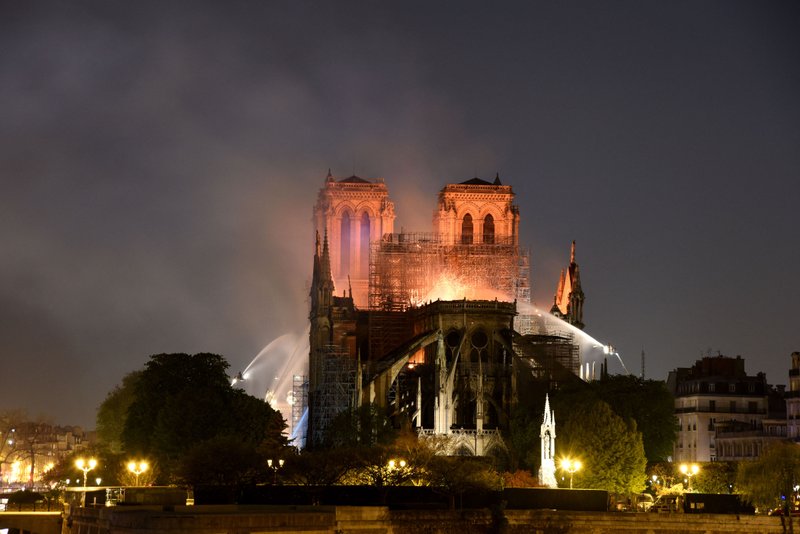You can tell yourself it’s just a building, just a church.
You can tell yourself everything changes, nothing lasts forever.
You can say these things and know them to be true, but if you’ve ever seen Paris’ Cathedral of Notre Dame, none of that mattered Monday when the most beloved church in the world went up in flames, and with it a piece of the world’s heart.
I was watching the catastrophe on a screen — “Massive Fire Engulfs Notre Dame” said the giant headline — when I got an email from a friend in New York I’ve known since college. We both lived in France during our 20s and have gone back many times.
“Another among the backdrops of our youth that seemed permanent, today in flames,” he wrote. “Who else can I shed tears with but you?”
Reading his note, I was grateful for the solace of our shared memory. I also knew that people everywhere were sharing that kind of shock and sadness.
Notre Dame de Paris — Our Lady of Paris — defines the city it occupies. It’s essential to the identity of Parisians and of special importance to Catholics. And yet perhaps more than any other building in the world, it belongs to all of us. It’s a piece of our collective past, a building that since its construction in the 12th and 13th centuries has survived wars and plagues, riots and revolution and Nazis, all the chaos of life on this planet. It symbolizes that survival.
It connects people through the centuries and connects people from all over the globe. If you’ve seen it, you probably remember the awe of the first time.
Maybe it was on a semester abroad or vacation, a trip for work, a honeymoon.
Maybe you saw it with someone you loved: a friend, a spouse, your mother, your children.
Maybe you saw it alone, glad for the solitude that let you absorb the splendor free of distraction.
Whatever the circumstances, if you were ever in Paris for even a day, you almost surely saw it: the giant rose windows, the spire, the gargoyles, the balustrades, the flying buttresses, the massive stone, the sheer size and audacity of it assured to make you gasp.
In modern times, thousands of people a day flock to the spectacle. They come from everywhere. From Kansas and China, South Africa and Argentina, Iowa and Iran. They speak countless languages, practice many religions.
They gawk and snap photos. Even the most casual tourist can’t help but feel in the presence of something far greater than a building. At Notre Dame, you’re in the presence of time itself.
I saw it for the first time when I was 19 and have seen it often since. It has never ceased to make me pause with wonder.
My last visit was three years ago this month. I avoided the tourist lines, content to settle onto a nearby park bench next to the river.
In the waning afternoon, as I sat there with the pigeons, the bells began to toll. I closed my eyes and let the sound roll over me, imagining all the people from distant centuries who on hearing the bells felt drawn into a power bigger than their own.
I imagined those mystical bells and all those vanished people Monday as the cathedral burned.
In the middle of the afternoon Chicago time, a headline on the TV screen warned: The fire chief in Paris says firefighters have 90 minutes to save Notre Dame. Ninety minutes to save nearly nine centuries.
Wikipedia had already updated its Notre Dame entry to note: “Spire of the cathedral, originally in place 13th-18th century, re-created in the 19th century, destroyed in a 2019 fire.”
In the end, though, Notre Dame wasn’t entirely lost. Millions of dollars were quickly pledged to restore what burned, stirring an inevitable backlash: So much money for an old church when there are so many people in need?
The question is valid. So is the spontaneous, genuine grief the fire aroused in the millions of people who recognize in this old church a power to elevate, inspire and briefly unite so many puny, combative humans.
As the flames raged and the smoke billowed, it was tempting to think of the fire as an omen of the world gone mad. But we have to remember that the world has always been mad and humans have always figured out a way to rebuild from ruins.

